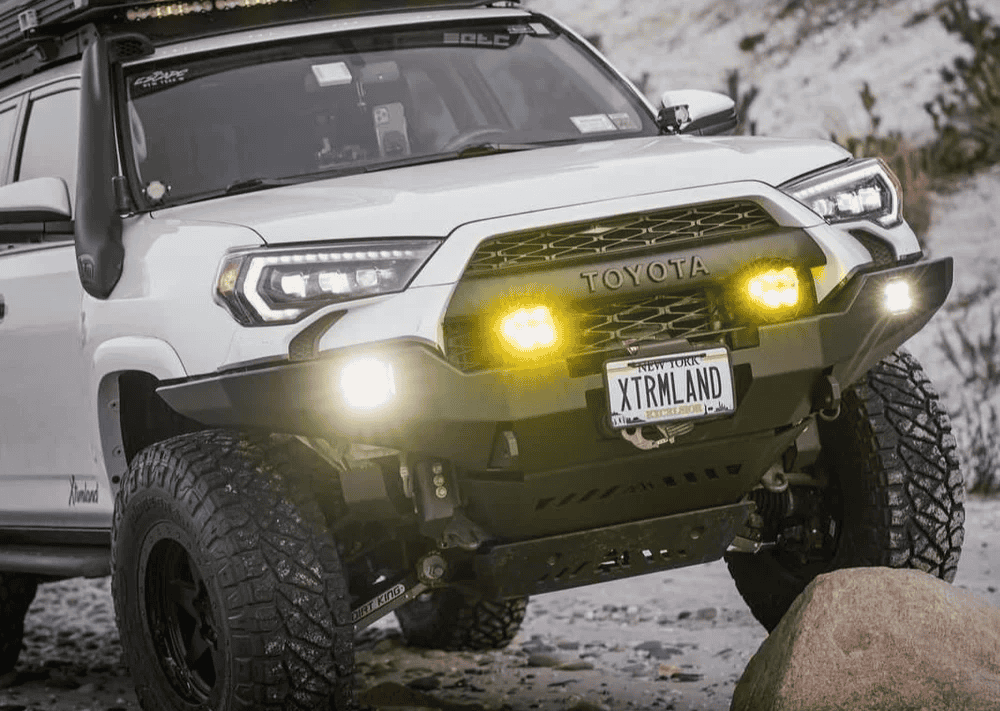Overland Vehicles

Suspension tuning shapes the way a vehicle puts power down, steers, and absorbs impacts across uneven ground. Springs support the vehicle at a target ride height while dampers control the speed of movement. Think in terms of energy management: bumps load the system, springs store that energy, and dampers turn motion into heat at a controlled rate so tires stay planted. The goal is compliance without bounce, stability without harshness, and full travel without bottoming.
Spring rate sets the baseline. Too soft and the chassis wallows and smashes into bump stops. Too stiff and the tires skip across chatter, losing grip. Natural ride frequency is a helpful guide for comfort and control, often around 1.3 to 1.6 hertz for trail trucks and overland builds. Damping divides into low speed events like body roll and pitch, and high speed events like square edges or washboard. Low speed compression and rebound influence body control, while high speed damping manages sharp hits.
Geometry matters as much as valving. Caster improves straight line stability, toe influences response and tire wear, and camber affects edge bite on off camber terrain. Anti roll bars reduce lean but trade some articulation, while bump stops act as a third spring for bottom out control. Unsprung mass from wheels, tires, and brakes affects how quickly the suspension can follow the ground. Keep it reasonable to maintain traction on rippled surfaces.
Start by weighing the vehicle at all four corners with the real load on board: passengers, water, fuel, tools, and recovery gear. Corner balance affects how much each tire contributes under braking and on climbs. Aim to minimize left to right split on the same axle and preserve intended rake so steering geometry stays in its sweet spot. Measure static ride height at fixed chassis points to track changes as you refine springs and preload.
Set tire pressure for terrain and weight, then confirm shock settings from a neutral baseline. Make one change at a time. Use repeatable tests that reveal traits you want to improve, and record temperatures to spot shock fade. Remote reservoirs, proper nitrogen charge, and quality oil help keep damping consistent on long descents or washboard.
Try these simple field checks:
Alignment ties the package together. Many trail rigs prefer more positive caster for straight line calm, often 3 to 5 degrees depending on platform. Keep camber near zero for even contact. Slight toe in can help stability at speed but increases tire wear if overdone. After heavy armor or a new roof load, recheck everything. Added weight at the ends of the vehicle raises the effective spring demand and can shift handling balance.
For slow technical rock work, focus on traction and articulation. Choose spring rates that allow full droop and bump travel without frequent bottoming, and keep low speed compression on the softer side so the suspension moves freely over ledges. Rebound should be controlled enough to prevent pogo but open enough that the wheels return quickly to the ground after a step down. Sway bar disconnects can add flex where platform allows. Air down tires within safe limits to enlarge the contact patch and soften impacts.
On fast two track, feel and heat control rule the day. Increase low speed compression slightly to reduce roll and pitch, and add high speed compression to blunt sharp edges. Rebound damping should prevent oscillation after big hits without packing down on successive ripples. Progressive bump stops or hydraulic bump cans help absorb rare but severe bottom outs. Watch shock temperatures and back off if fade appears, or move to components with better thermal capacity when sustained speed is normal for your terrain.
Overland travel adds constant mass through armor, racks, water, fuel, and spares. Pick springs based on actual scale weight, not guesses. Match damping to the new rate so the vehicle feels controlled, not brittle. Preserve front caster for highway manners after lift components are installed, and consider corrected control arms where geometry demands it. The rear may benefit from progressive helper springs to support payload while keeping initial compliance over small chatter. Keep weight low and centered to reduce body motion and improve emergency handling.
If you prefer guidance instead of guesswork, OZK can blueprint a complete setup, validate ride height, and test on the same type of terrain you plan to drive. Explore options for full builds and suspension focused rigs on our trail ready page: Explore overland rigs. If your vehicle needs a tailored package, see our service path here: Custom overland upfit. Curious about our philosophy and process, from consultation to final shakedown near Fayetteville Arkansas, start here: Why choose OZK Customs.
Tuning is both science and feel. You measure, adjust, and drive until the rig moves as one piece across rocks, roots, and ripples. When you want that result without trial and error, OZK Customs brings road tested experience to spring selection, shock valving, bump stop setup, and alignment, then hands you a rig that feels confident on day one. Book a session, bring your loadout, and let us deliver a suspension that fits how and where you travel.
Ready to feel the difference a purpose-built suspension makes? Tell us about your terrain, loadout, and goals. OZK Customs will spec springs and shocks, set ride height, align for control, and validate on real trails. Start your build today and drive home with a dialed rig.
ADDRESS:
6159 E Huntsville Rd, Fayetteville, AR 72701
PHONE:
(479) 326-9200
EMAIL:
info@ozkvans.com